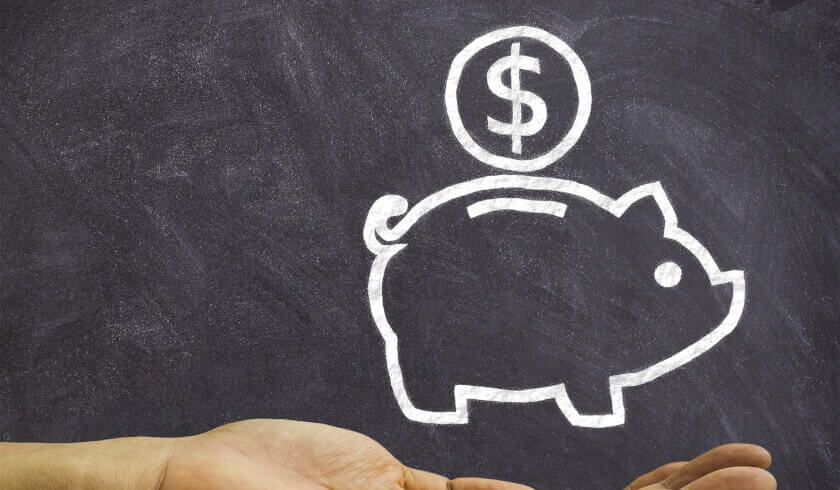The costs of building a property portfolio
Beginning a property investment journey entails not only education and mentorship but also enough savings to jumpstart the acquisition phase of your journey. How much do you need to take out of your pocket as you start building your portfolio?

According to property professional Jack Needham, there is no magic formula for determining the amount of money you need in order to start investing in property.
Instead, here are some of the factors that can influence your initial expenditure:
1. Location and type of asset
The amount you need will be largely dependent on the location you want to buy in and the type of property you want to purchase.
Houses and units vary in costs and so do regional and city-based assets due to population and other socioeconomic drivers.
2. Investment strategy
Your chosen investment strategy can also affect how much money you need to jumpstart your investment journey.
As an investor, you can buy a more expensive property in a ‘blue-chip’ suburb using a larger capital then utilise negative gearing concessions to offset short-term losses, provided that the property achieves enough growth in value over time.
On the other hand, you can purchase a low-cost property with a higher rental yield if your priority is to sustain cash flow.
Whichever strategy you use, it’s important to remember that the price of a property is not a sufficient indication of its potential for success.
Mr Needham explained: “Spending the same amount of money on two properties will not guarantee that each will perform as well as the other. Growth and yield will come down to how well a property’s attributes stand up to the market.”
“With this in mind, any investor needs to conduct thorough research into the property they are planning to purchase to ensure it stacks up and maximises their investment dollars,” he added.
Property deposit
The deposit, which is defined as “the amount of money you put down at the start of the purchase in order to secure the property and financing” and is calculated as a percentage of the purchase cost, is one of the first costs associated to a property purchase.
In most cases, the deposit ranges from 10 per cent to 20 per cent of the purchase costs, but it can go higher depending on your chosen lender and property type, as well as your buyer profile.
Investors who pay low deposits, or below 20 per cent, and those who purchase properties at higher risk of default are often required to pay for lender’s mortgage insurance (LMI), which protects the lender once the borrower defaults on his mortgage.
“It is a one-off payment but it can be capitalised into the ongoing repayments on a home loan,” Mr Needham said.
Meanwhile, paying a higher deposit may improve your serviceability or increase the amount you can borrow, thereby giving you the opportunity to secure a higher-value property while avoiding additional costs such as the LMI.
However, a higher deposit may also lower your capital and hinder you from making further purchases in the near future.
Stamp duty and other costs
Aside from deposit and insurance costs, most investors are required to pay stamp duty on their property purchase depending on jurisdiction and property value. The cost can range from as low as $20 to tens of thousands of dollars, according to Mr Needham.
He said: “Stamp duty is also charged on the registration of a mortgage. This is a charge imposed by state and territory authorities, and varies by jurisdiction [and] ... is typically paid on an investor’s behalf by a lender and absorbed into mortgage repayments.”
“Some states, such as [New South Wales], have signalled their intention to abolish mortgage stamp duty,” the property professional added.
Pest and building inspections are also included in the initial costs associated to a property purchase. It may cost $400 or more, depending on the size of the property.
Buyers will also have to pay conveyancing fees to the legal representative for facilitating the property purchase and conducting title searches.
Once the property is secured, there will be more associated costs to holding the investment property, which includes loan repayments, council rates and land tax, water rates, insurance, body corporate fees, repairs and maintenance costs, property management fees, and tax on rental income, among others.
Setting a budget
Before starting your property investment journey, Mr Needham strongly encouraged setting a budget so you don’t go all out and spend your life savings to build your investment portfolio.
According to him: “Properties are tangible assets that are susceptible to damage from the people residing in them and the outdoor elements.”
“It is important to maintain a buffer for emergency repairs, ongoing maintenance, and periods of vacancy, or where your primary income might be subject to unforeseen change.
“It might mean making sacrifices to your day-to-day living expenses or limiting your initial investment amount, but maintaining access to emergency funds will pay off in the long run—often in ways you might not expect,” he concluded.

